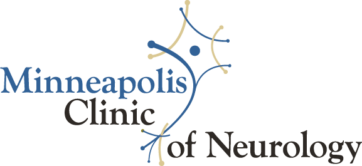Dedicated to providing exceptional personalized neurologic care to our pediatric, adolescent and adult patients; to our acute patients in the hospital and our clinic patients with temporary or chronic conditions; to our patients that come to our five metro offices and to those that we visit in their home communities. Founded in 1955, we have grown to be one of the largest neurology practices in the nation because of our focus on providing exceptional personalized neurological care.
Amyotrophic Lateral Sclerosis (ALS), also known as “Lou Gehrig’s disease,” is a neurodegenerative disease of motor neurons in the brain and the spinal cord.
Although there are many causes of dementia, the most common is Alzheimer’s disease, which accounts for about two-thirds of all dementia cases.
An aneurysm is a bulge that develops in an artery due to a weakness in the wall of the artery.
Autism is a term referring to a group of neurodevelopmental disorders manifesting in a broad spectrum of behaviors, varying widely in severity and outcome.
Bell’s palsy is one-sided facial weakness/paralysis of the muscles around the eye and the mouth innervated by cranial nerve seven.
Carpal tunnel syndrome (CTS) is one of the most common causes of numbness, tingling and pain in the hand and fingers.
Complementary and alternative medicine treatments are increasingly employed to supplement traditional Western medicine treatments in neurology.
Complex regional pain syndrome is a chronic pain condition that can occur in any part of the body; however, it is usually regional, such as in an arm or leg, and often a result of an injury.
Concussion & Traumatic Brain Injury: Adult
Traumatic brain injury (TBI), or simply head injury, takes place when a trauma causes injury to the brain.
Concussion & Traumatic Brain Injury: Pediatric
Mild head trauma without neurologic symptoms is referred to in the literature as “head injury.”
Diplopia refers to double vision. Diplopia can result from problems affecting the brain (brainstem), the nerves that control the eye muscles, the neuromuscular junction (the connection between the nerve and the muscle) or conditions that affect the eye muscles themselves.
The word “dizzy” encompasses multiple descriptions – lightheadedness, swimming sensation, wooziness, unsteadiness, floating, imbalance, tipping, spinning or vertigo.
Dystonia is a neurologic syndrome characterized by involuntary, sustained, patterned and often repetitive muscle contractions of opposing muscles causing twisting movements or abnormal postures.
Essential tremor (ET) is a common neurological condition that causes involuntary tremors (shaking) in the hands, legs, trunk, head or voice.
Fibromyalgia syndrome is a complex and poorly understood arthritis-related disorder characterized by chronic generalized pain and muscle tender points.
Headache, like chest pain or abdominal pain, is a symptom that can have many causes.
Insomnia refers to a disturbance of sleep initiation or maintenance, despite adequate opportunity and circumstances for sleep, resulting in impaired daytime function.
Atherosclerosis, or what is commonly referred to as “hardening of the arteries,” refers to a generalized deterioration of the arteries of the body.
The term, “stroke,” is used to identify a variety of pathologic intracranial (within the skull) vascular processes.
Low back pain is the evolutionary price that we humans have paid for going from a four-legged creature to an up-right, two legged one.
Mild cognitive impairment (MCI) is a relatively new term used to describe mild symptoms of decreased mental function.
Multiple Sclerosis: Laboratory Evaluation
To ensure an accurate diagnosis, it is common practice to perform a thorough battery of diagnostic investigations when evaluating a patient for multiple sclerosis (MS).
Multiple Sclerosis: New Developments in Care
As part of the strategies to manage this complex disease, the techniques of rehabilitation and exercise are frequently used.
Myasthenia gravis (MG) is an autoimmune disorder that results in neuromuscular junction dysfunction.
Obstructive Sleep Apnea (OSA) is caused by repetitive collapse or critical narrowing of the upper airway, usually behind the uvula and soft palate and/or the base of the tongue.
Narcolepsy is a lifelong neurologic sleep disorder associated with overwhelming sleepiness (hypersomnia) and, in severe cases, sudden uncontrollable sleep attacks.
The cervical spine consists of the uppermost seven vertebrae surrounding and protecting the spinal cord.
Neurofibromatosis (commonly abbreviated NF), a genetically inherited disease that causes tumors to grow on nerve tissue producing skin and bone abnormalities, affects an estimated 100,000 Americans.
Entrapment neuropathy arises due to nerve damage resulting from chronic mechanical compression.
Parkinson’s disease is a slowly progressive neurologic disorder characterized by difficulty with balance and shuffling gait, rigidity (abnormal muscle stiffness) of the extremities, resting tremor, slowed and stiff movements (called bradykinesia), decreased facial expressiveness and blinking, and alteration in the sense of smell.
Parasomnias are a group of sleep disorders involving unwanted events or experiences while you are falling asleep, sleeping, or waking up.
About ten percent of the population experiences some form of restless legs syndrome (RLS).
A seizure is a brief electrical discharge of the brain that can result in a change in alertness, body movements, thoughts or sensations.
Though involuntary movements in children are not uncommon, they can arouse a great deal of anxiety in parents, teachers and the child.
Von Hippel-Lindau disease (VHL) is a rare, genetic multi-system disorder of congenital capillary angiomatous hematomas.
